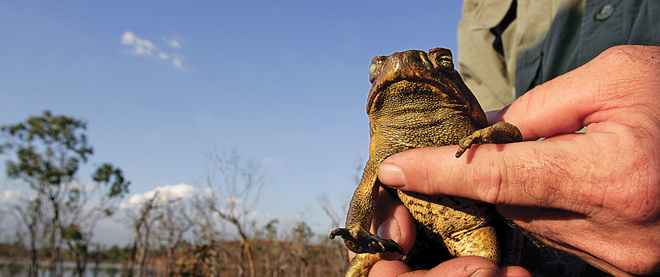Toxic toads poison themselves
University of Sydney scientists figure out a simple way to turn deadly amphibians against themselves
David Gray/Reuters
Share

Even a seemingly indestructible nemesis has a weakness. For Achilles, it was his heel. For Australia’s hated cane toads, it’s their highly toxic poison. University of Sydney scientists have figured out a simple, low-cost way to turn the toxin against the deadly amphibians. That’s good news for a nation that has seen huge swathes of its native species wiped out after the toads were imported in 1935 to control a sugar cane beetle. Within months of arriving in an area, the toads’ poison kills up to 95 per cent of native animals, including birds and even crocodiles that feed on amphibians. With no predators, they now cover large areas of Queensland and the Northern Territory.
But the toads’ ruthless efficiency is also their weakness. Cane toad tadpoles are cannibals, researchers have discovered; they hunt down and eat other cane toad eggs, which might otherwise grow to be rivals for food, by smelling the eggs’ cane-toad poison. So scientists lured the tadpoles into traps in two ponds, using the same poison as bait, and virtually eliminated one future generation of toads. While the technique won’t eradicate the toads from large bodies of water, it could protect conservation areas. There’s a bonus: the chemical lure didn’t attract native animals.